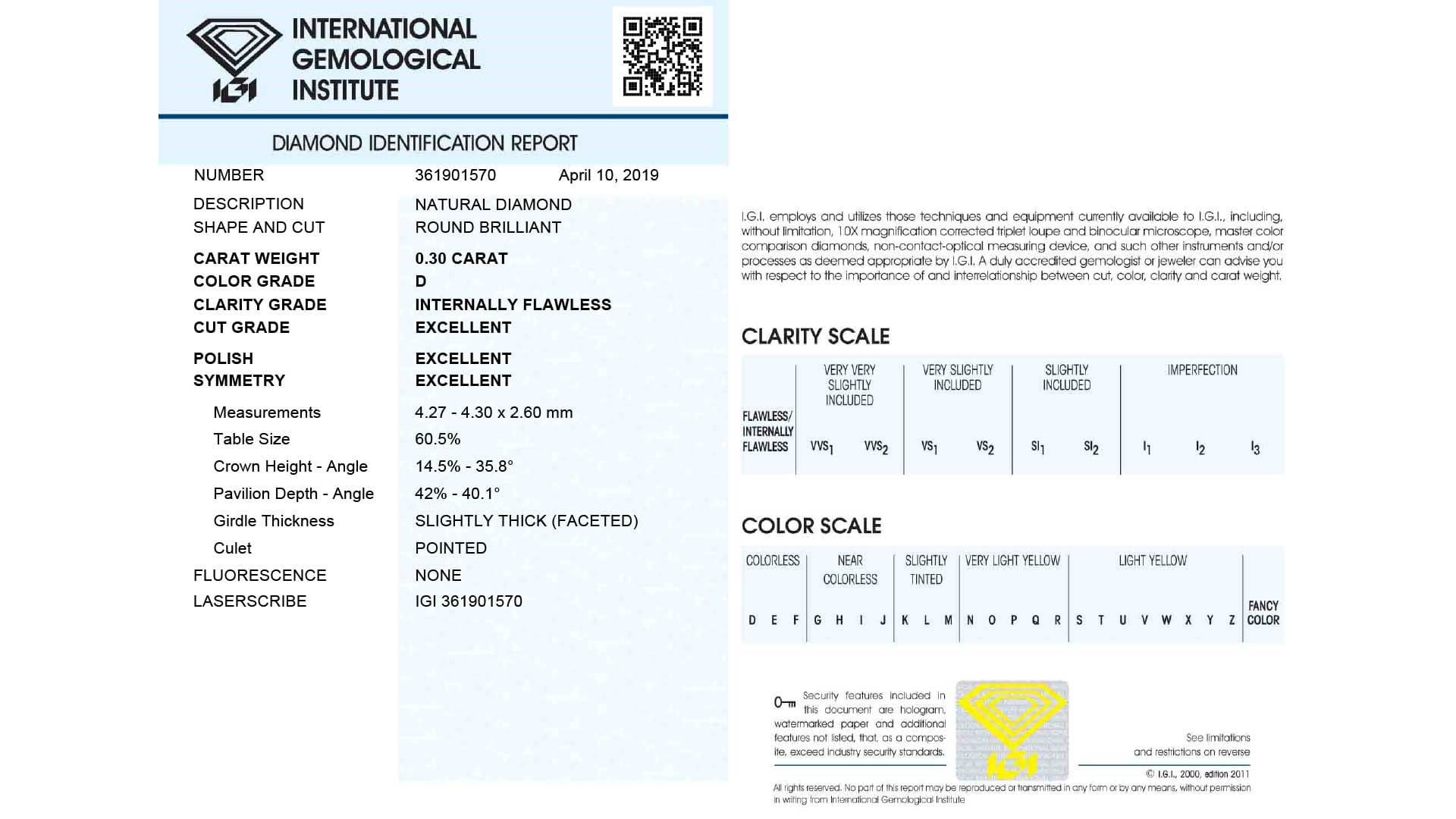

But if one of the diamonds has a diamond grading report from a lab that inflates its color grades and clarity grades, you can’t really compare them as equals. If you are comparing two H color and SI1 clarity diamonds with excellent cut grades you might be tempted to pick the one with the lower price. Picking the wrong lab can cost you a lot of money and result in you buying a stone that’s not really the high-quality diamond you think it is. The name of the laboratory on a lab report can result in hundreds or thousands of dollars difference in diamond prices. Diamond professionals don’t consider lab reports from different labs to be the same when evaluate diamonds. They are only as valuable as the reputation of the lab that issues them. Not all diamond grading report are the same. That’s why it’s vitally important to choose a diamond that’s graded by the right diamond laboratory. Some are honest differences of opinion and some are part of a lab’s overall policy: some labs grade more leniently because it makes them more popular with dealers and retailers. That difference in color grading actually happens all the time: so do differences in clarity grading and cut grading. One lab could call a diamond an H color grade and another could call it an F color grade. Why You Need the Right Diamond Grading Reportĭiamond grading is opinion and there isn’t one consistent diamond grading system that defines what a G color grade is or what a VS1 or VS2 clarity gradelooks like. You can find reputable independent appraisers through the American Society of Appraisers or the National Association of Jewelry Appraisers.)

Because the appraisal isn’t from a nationally known institution or from an independent authority, it doesn’t really confirm the quality of the diamond or gem, which is what the diamond price is based on. But an appraisal can’t replace a grading report. It also ensures you will receive the same quality replacement if it is ever lost or stolen: insurance companies use your diamond report to determine the quality of your replacement diamond.ĭiamond Grading Reports vs Diamond AppraisalsĪ report isn’t an appraisal: it describes your diamond, it doesn’t give you an estimate of a diamond price (which can change over time.) Some retailers will give you an appraisal from the store or from a local individual who works with the store. Along with a girdle inscription, it confirms that the diamond you are paying for is the one you are getting.Ī reputable diamond grading report also helps you to identify your diamond if you ever have to repair or sell it. A diamond grading report will also confirm if a diamond is natural or lab-grown and disclose if there are any diamond treatments like heating or laser drilling. A grading report levels the playing field between retailers to help you compare diamond prices while you are shopping for a diamond ring, engagement ring, or other jewelry with significant diamonds.Ī diamond grading report, popularly referred to as a “diamond certificate,” diamond laboratory report, diamond dossier, diamond quality document, or diamond light performance report, gives you a description of the 4Cs of diamond quality – color grade, clarity grade, cut evaluation, and carat weight − and can be used to identify an individual stone, like an ID card. Grades range from ‘Excellent’ to ‘Poor.If you are buying a significant diamond or engagement ring, a grading report from an independent and objective third party can help verify its quality and value. The amount of brilliance, sparkle, and fire in a diamond is determined by cut. The D-to-Z diamond color-grading system measures the degree of colorlessness by comparing a stone under controlled lighting and precise viewing conditions to master stones of established color value.ĭiamond Clarity (FL to I) measures the amount, size and placement of internal ‘inclusions,’ and external ‘blemishes.’ Grades run from ‘Flawless,’ with virtually no imperfections, to ‘Included,’ which contain a significant number of imperfections.ĭiamond-Cut (EX – P) does not refer to a White Diamonds Jewellery shape, but the proportion and arrangement of its facets and the quality of workmanship. Some of these differences are not visible to the naked eye, but directly impact the overall quality and price of the White Diamonds Jewellery. The less color “D” in the stone, the more desirable and valuable it is. White Diamonds Jewellery (from D – Z ) In most, the term refers to the absence of color.


 0 kommentar(er)
0 kommentar(er)
